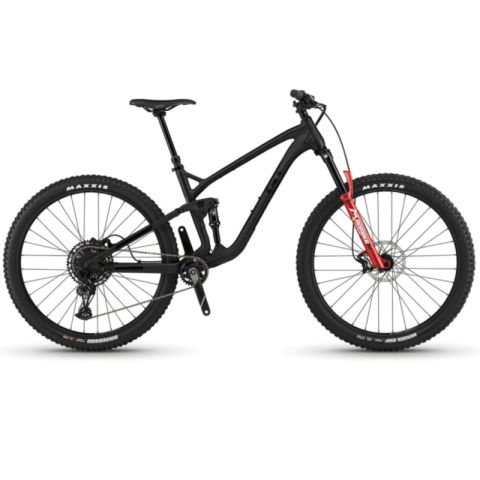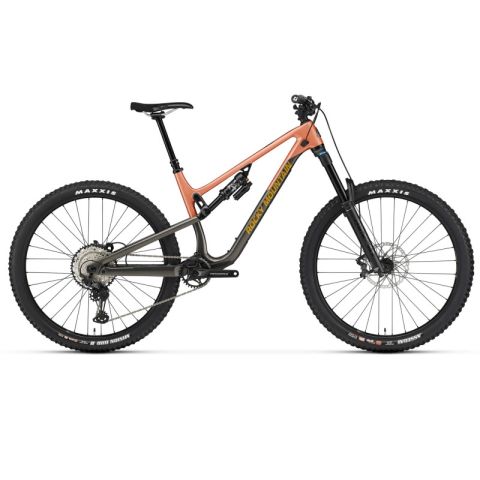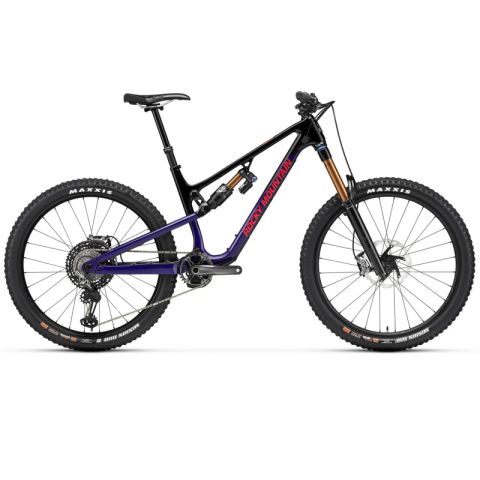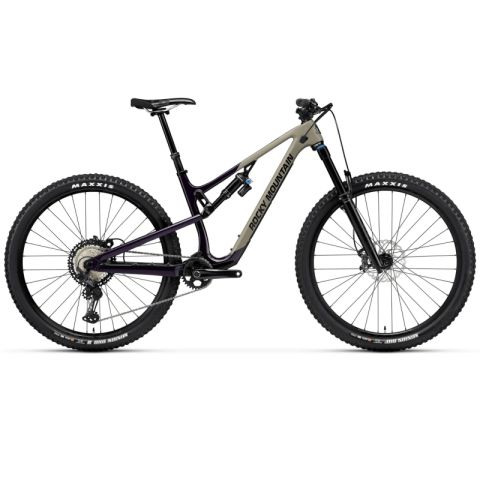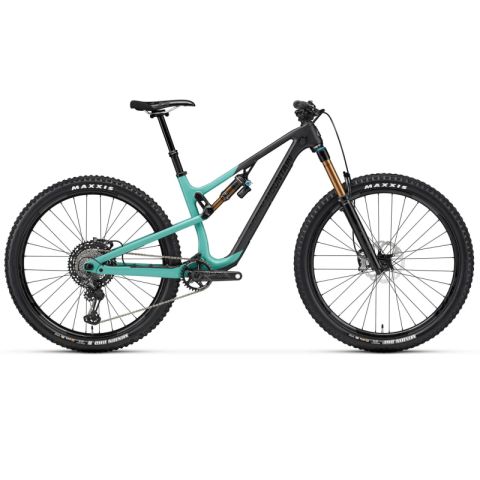Dual Suspension
Suspension Travel.
Suspension travel is the most important thing you’ve gotta understand.
The basics:
It’s how much the front suspension moves (or travels).
For the rear, it’s how much the rear wheel moves (or travels) not how much the rear shock compresses.
For example, the Rocky Mountain Instinct has 140mm of rear wheel travel. But the shock actually travels by 52mm (called the shock stroke).
Also:
More suspension is not better.
Less suspension is not better.
The dual-suspension mountain bike you choose has to have suspension travel that is appropriate for the riding you plan to do and the feel you want.
For riders who want the most responsive feel, bikes like the Giant Anthem with 100mm of rear wheel travel are going to suit.
At the other extreme:
For riders who want the most stability for high-speed technical trails, bikes like the Rocky Mountain Altitude will have 160mm of rear wheel travel.
If you want a bit of both:
A trail bike with 140mm to 150mm of rear wheel travel will skilfully balance out both extremes.
A simple thought:
Adding more rear wheel travel, adds more stability for rougher trails.
And takes away some responsiveness.
For new riders.
Read this if you’ve never owned a dual-suspension mountain bike before.
New riders need to consider what dual-suspension mountain bike is appropriate for them now.
And is this dually still going to be the right bike as you progress (and become a better rider) into the future.
Plus:
Is this bike suitable for all the trails that I ride 80% of the time?
And will it still handle the occasions where I want to ride outside of my comfort zone?
To save you thinking and searching time, here’s the answer for (most) new riders:
A trail bike.
A trail bike is a type of dual-suspension mountain bike that is calm at speed over rough terrain.
It will inspire confidence because the bike isolates you from the terrain.
You don’t feel the trail as much because the suspension is doing most of the work.
For riders upgrading from a dual-suspension MTB.
Chances are that if you’re upgrading, you have the fundamental skills of mountain biking and foundational bike fitness.
You’re probably searching for that next level of grip, ergonomics, stability and confidence.
This is where you’ve gotta decide:
Do you want more suspension travel?
Knowing that you’re going to gain more stability and confidence. But risk losing low-speed response.
Do you like the feel of the bike you already have?
If yes (depending on the age of your bike), the component upgrades on the modern version of your bike could be enough to gain you the feel you’re after.
The options. Warning: there’s a lot of dual-suspension mountain bike options.
We can’t list all of them out here, so we’ll make some special mentions and move fast.
And try to keep it simple.
Responsive. If you want the most responsive bike, it’s gotta be the Giant Anthem.
With 100mm of rear wheel travel, it prioritises covering ground fast.
But:
There’s a bike that still values efficiency and that’s more forgiving.
The Rocky Mountain Element.
The Element is perfect for riders upgrading from a hardtail (front suspension only) mountain bike because like the hardtail it’s responsive, agile and efficient at moving you long distances without too much effort.
And it also adds calm handling, stability and confidence to semi-technical trails (trails rated as a blue square).
Balanced. The Giant Trance X and the Rocky Mountain Instinct.
Both bikes are designed to be adventure bikes and excellent all-rounders.
The Instinct will be a touch more manageable at lower speeds and more responsive. The Trance X is more stable at high-speed.
Both of these bikes use 140mm of rear wheel travel and are paired to a 150mm travel suspension fork.
This amount of suspension tends to be the sweet spot.
Efficient enough to climb with
Max. Stability. If you want the calmest handling bike at super high speed over raw, technical and exposed trails, then you need an Enduro bike.
Examples include the Giant Reign and Rocky Mountain Altitude.
